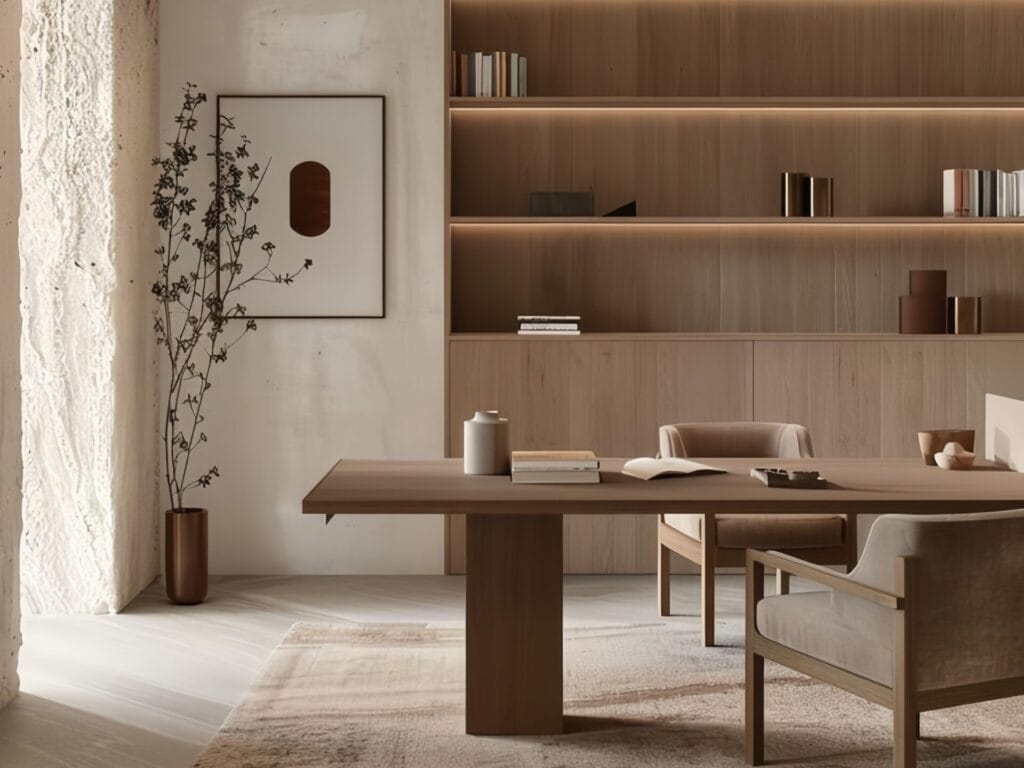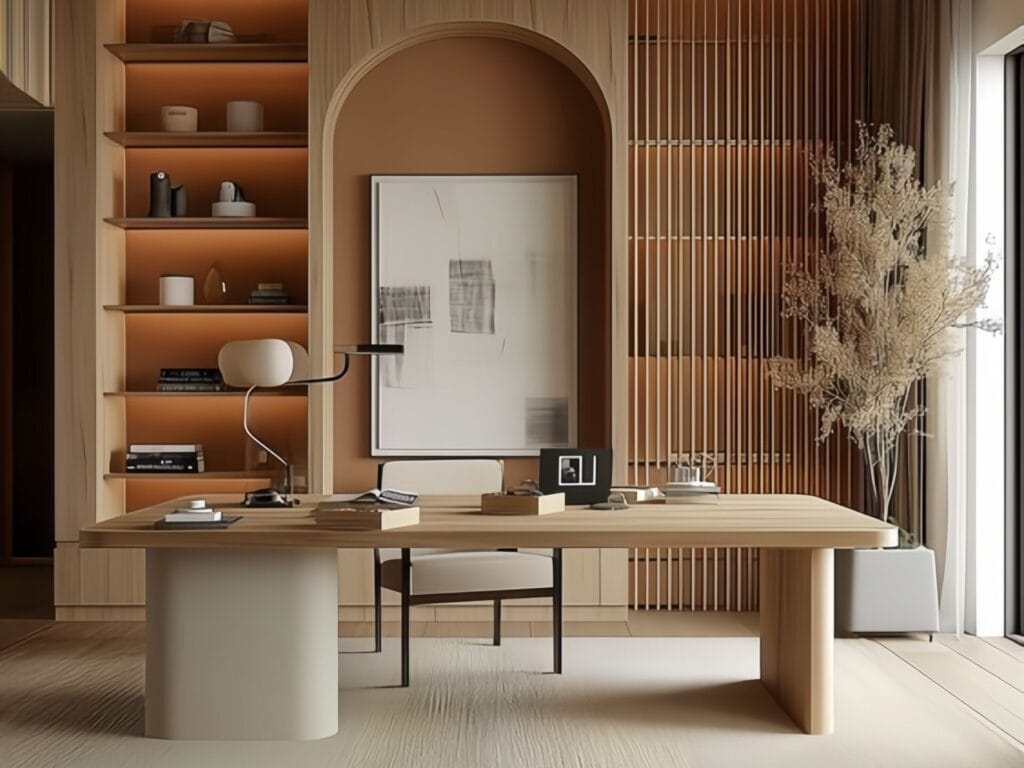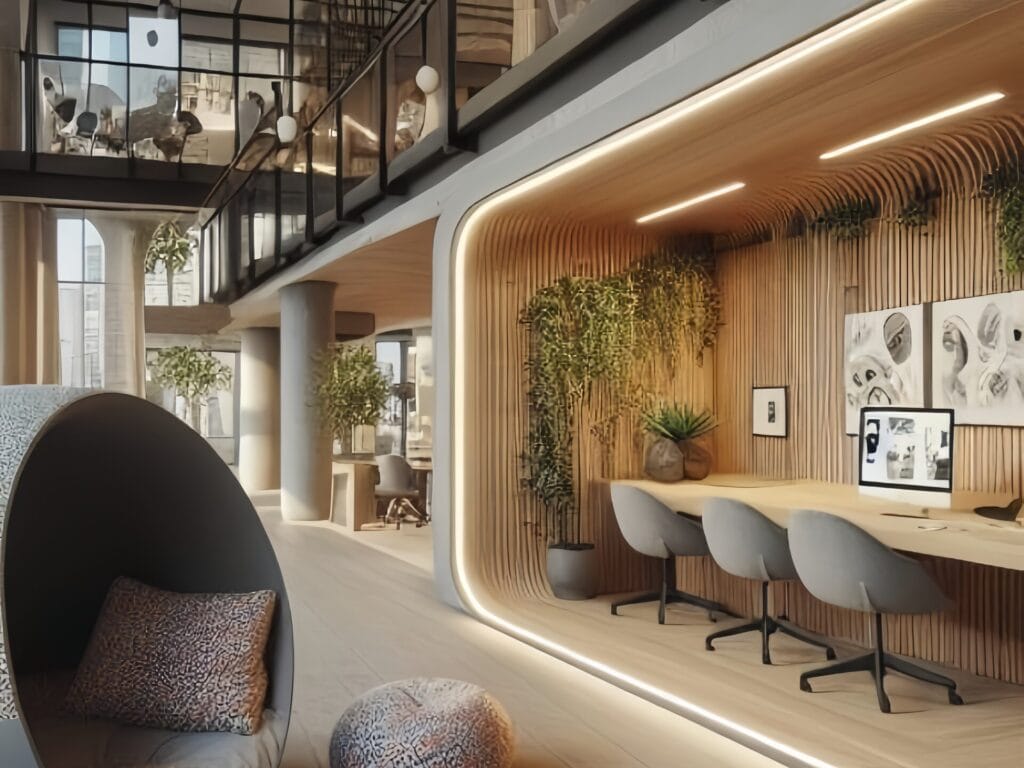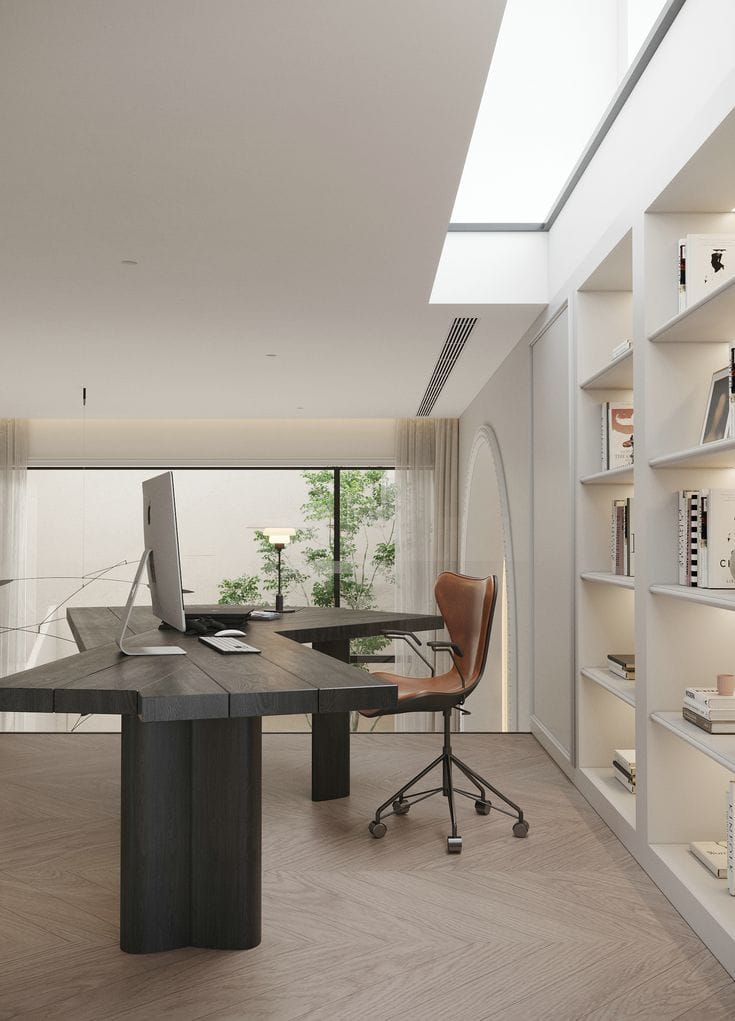Understanding Eco-Friendly Commercial Furniture

Eco-friendly commercial furniture refers to furnishings designed with environmentally sustainable materials and production methods, which minimize their impact on the planet. This type of furniture is becoming increasingly important as businesses strive to adopt sustainable practices. Many conventional furniture options are often made using materials that are harmful to both human health and the environment. These traditional options typically include the use of non-renewable resources, toxic chemicals in finishes, and manufacturing processes that create excessive waste and pollution.
In contrast, eco-friendly commercial furniture is typically constructed from sustainably sourced, renewable materials such as bamboo, reclaimed wood, and recycled metals or plastics. These materials not only help reduce resource depletion but also result in lower carbon emissions during the manufacturing process. Additionally, eco-friendly furniture may be produced using non-toxic finishes, further enhancing their safety for indoor air quality. Additionally, many manufacturers prioritize sustainable practices throughout the product lifecycle, including packaging and transportation methods that reduce environmental impact.
The significance of incorporating eco-friendly commercial furniture into the workplace extends beyond environmental responsibility. Businesses adopting green alternatives often experience enhanced brand image and reputational benefits, aligning themselves with a growing consumer preference for sustainability. Increasingly, employees express a preference for working in greener environments that emphasize health and well-being. As such, investing in eco-friendly options may contribute to higher employee satisfaction and retention rates. Moreover, many eco-friendly furniture options come with certifications that verify their environmentally friendly credentials, allowing consumers to make informed choices.
In summary, understanding the importance and implications of eco-friendly commercial furniture opens the door for businesses to make more sustainable decisions while promoting a healthier workplace and contributing to global environmental efforts.
Key Factors to Consider When Choosing Eco-Friendly Furniture
When selecting eco-friendly commercial furniture for your workspace, several key factors come into play that can greatly influence your choice. First and foremost is the material used in the furniture’s construction. Opting for items made from sustainable resources, such as natural wood, bamboo, or recycled plastic, is essential. Natural wood furniture, for example, not only offers durability but also embodies a sustainable approach when sourced from responsibly managed forests. Similarly, bamboo is fast-growing and requires minimal resources for cultivation, making it an excellent option for eco-conscious businesses.
Another important consideration is the production process. It is vital to assess how the furniture is manufactured. This includes evaluating the environmental practices of the manufacturers, such as using non-toxic finishes and adhering to fair labor practices. Sustainable brands often prioritize minimizing their carbon footprint during production, which can involve utilizing renewable energy sources and efficient manufacturing techniques. Understanding these practices will enable businesses to invest in furnishings that align with their environmental values.
The design longevity of the furniture is another crucial factor. Eco-friendly commercial furniture should not only be made from sustainable materials but also designed for durability and timelessness. This reduces the need for frequent replacements, further enhancing the eco-friendliness of the choice. Furthermore, it is advisable to consider the furniture’s end-of-life disposal; products that can be easily recycled or repurposed add to the sustainability factor.
Ultimately, evaluating all these aspects—materials, production practices, design longevity, and recyclability—will ensure a well-rounded decision when choosing eco-friendly commercial furniture for your workspace. This mindful approach ultimately contributes to a healthier environment while fulfilling the functional needs of your business.
Understanding Certification Standards
Choosing eco-friendly commercial furniture involves navigating a range of certification standards that affirm a product’s commitment to sustainability and safety. These certifications serve as a reliable guide for consumers, effectively distinguishing between genuinely eco-friendly options and less sustainable alternatives. Among the most recognized certifications are the Forest Stewardship Council (FSC) and GREENGUARD certifications, each carrying distinct criteria and implications for the eco-conscious buyer.
The Forest Stewardship Council (FSC) certification assures that the materials used in furniture production originate from responsibly managed forests. This means that the timber is harvested in a manner that conserves biodiversity, respects the rights of indigenous communities, and mitigates negative environmental impacts. When selecting eco-friendly commercial furniture, look for the FSC logo, as it signifies adherence to strict environmental and social standards throughout the supply chain.
On the other hand, GREENGUARD certification focuses on the indoor air quality of furniture products. This certification indicates that the furniture has been tested for volatile organic compounds (VOCs) and other harmful emissions. Products bearing the GREENGUARD mark are recognized for their contribution to maintaining a healthier indoor environment, making this certification particularly relevant for office spaces where employees spend significant hours. Choosing GREENGUARD-certified eco-friendly commercial furniture helps to promote a work atmosphere free from pollutants that can adversely affect health and productivity.
In addition to these major certifications, other standards such as SCS Global Services and Cradle to Cradle can also provide valuable insights into the sustainability and environmental stewardship of furniture products. By familiarizing oneself with these certifications, consumers can make informed decisions that align with their sustainability goals and prioritize eco-friendly practices in their workspaces.
Practical Shopping Tips for Eco-Friendly Furniture

When embarking on the journey to select eco-friendly commercial furniture for your workspace, it is crucial to adopt a practical approach that goes beyond aesthetics. Begin by researching the materials used in the furniture you are considering. Look for products made from sustainably sourced wood or recycled metals, as these materials tend to have a lower environmental impact. Additionally, consider furniture constructed from non-toxic finishes and adhesives, as they contribute to better indoor air quality.
Aesthetics play a vital role in furniture selection, but ensuring that the design aligns with environmental standards is equally important. Seek out brands that emphasize eco-design principles, which not only enhance visual appeal but also prioritize sustainability. Furniture that incorporates modular design is an excellent choice as it can be adapted to changing needs over time, maximizing both functionality and lifespan.
It is also beneficial to evaluate the certifications associated with certain products. Look for eco-labels and certifications such as the Forest Stewardship Council (FSC) or GREENGUARD, which indicate compliance with environmental standards. These certifications provide assurance that the furniture has been produced responsibly, minimizing its ecological footprint.
Furthermore, consider how the furniture will fit into your workspace layout. Assess the functional requirements of your work environment and select pieces that serve a dual purpose, such as storage solutions that also act as seating. This not only optimizes space but also enhances the overall efficiency of the workspace.
In conclusion, choosing eco-friendly commercial furniture involves a thoughtful assessment of materials, design, certifications, and functionality. By prioritizing these aspects, you can contribute to a more sustainable work environment while creating an aesthetic that enhances your office’s appeal.
Common Misunderstandings About Eco-Friendly Furniture
In recent years, the emphasis on sustainability has led to an increased interest in eco-friendly commercial furniture. However, several misconceptions continue to persist, potentially hindering informed decision-making for businesses and individuals alike. One of the most prevalent misunderstandings is the belief that higher prices automatically correlate with better environmental performance. While it is true that some eco-friendly furniture may come with a higher price tag due to the quality of materials and responsible manufacturing practices, this is not universally applicable. Numerous affordable options exist that maintain eco-friendly standards, proving that sustainability does not always have to come at a significant cost.
Another common myth is that the visual appeal of furniture can indicate its ecological impact. Many assume that if a piece looks natural or organic, it must be made from sustainable materials. However, appearances can be deceiving. Eco-friendly furniture is often crafted from specially treated materials that may not resemble traditional wood or fabric. Therefore, simply assessing a product based on its look can lead to misconceptions about its environmental impact. To accurately gauge the sustainability of commercial furniture, it is essential to focus on certifications and materials used, rather than relying solely on external appearances.
Moreover, another extensive misconception surrounds the durability of eco-friendly options. Some may incorrectly assume that environmentally conscious products lack the robustness of conventional furniture. In reality, many eco-friendly materials are designed to be durable and long-lasting, providing a viable option for commercial use without compromising on quality or aesthetic appeal. Understanding these fundamental truths is crucial for making informed choices regarding eco-friendly commercial furniture, ultimately leading to sustainable business practices that benefit both the environment and workplace well-being.

Durability of Eco-Friendly Commercial Furniture
When considering eco-friendly commercial furniture, one of the foremost concerns for business owners is its durability. It is a common misconception that opting for environmentally friendly options inherently means compromising on the quality and longevity of the materials used. However, a closer examination reveals that many eco-conscious materials are not only sustainable but also designed to withstand the rigors of daily use in a commercial environment.
Many manufacturers of eco-friendly commercial furniture utilize materials such as reclaimed wood, bamboo, and recycled metals. These materials have demonstrated impressive durability and resilience over time. For instance, bamboo is known for its remarkable strength-to-weight ratio, making it an excellent choice for furniture that can endure heavy use while maintaining its aesthetic appeal. Reclaimed wood, on the other hand, often comes from old structures that have proven their endurance through decades, if not centuries, of exposure to various conditions.
In addition to material choice, the construction techniques used in eco-friendly furniture play a pivotal role in ensuring longevity. Many eco-friendly manufacturers adhere to responsible and sustainable practices, such as using non-toxic adhesives and finishes, which not only contribute to environmental health but also enhance the furniture’s durability. Moreover, pieces that are well-constructed and designed with repairability in mind can easily be maintained and revitalized, extending their lifespan further.
Ultimately, choosing eco-friendly commercial furniture does not mean sacrificing quality or longevity. By selecting pieces made from resilient materials and crafted with skill, businesses can enjoy the benefits of attractive, sustainable furnishings that stand the test of time. This approach not only supports environmental sustainability but also makes sound economic sense for companies aiming to create lasting, positive impressions through their workspace. In conclusion, eco-friendly commercial furniture offers a blend of sustainability and durability, making it a wise investment for any workplace.
Maintenance of Eco-Friendly Commercial Furniture
Maintaining eco-friendly commercial furniture is essential not only for enhancing its longevity but also for preserving the positive environmental impact associated with its use. Sustainable furniture is often made from natural or recycled materials, which can require specific care methods to ensure they retain their beauty and performance over time. To effectively maintain these furnishings, understanding the materials they are made from is crucial.
One of the primary considerations in maintaining eco-friendly furniture is the use of appropriate cleaning products. Many conventional cleaners contain harsh chemicals that can damage natural fibers, finishes, and surfaces. It is advisable to opt for non-toxic, biodegradable cleaning solutions that are specifically formulated for the materials used in your sustainable furniture. For example, using a mixture of mild soap and water can be effective for wood furniture, while microfiber cloths are ideal for gently wiping down surfaces without scratching them.
In addition to using suitable cleaning products, it is also important to establish a regular cleaning routine. Dusting and wiping down surfaces periodically can prevent buildup that may mar the appearance of your eco-friendly commercial furniture. Furthermore, for upholstered pieces, regular vacuuming can help maintain cleanliness and prevent dirt and allergens from settling into fabrics. If possible, schedule professional deep cleaning for fabrics and upholstery to keep them in optimal condition.
Another consideration for prolonging the life of sustainable furnishings is to be mindful of how they are used. Avoid placing heavy objects on delicate surfaces to prevent scuffing and scratches, and consider using coasters or placemats to protect tabletops from heat and moisture. By adhering to these maintenance tips, you can ensure that your eco-friendly commercial furniture remains both functional and aesthetically pleasing while supporting your commitment to sustainability.

Q&A: Your Most Pressing Eco-Friendly Furniture Questions
In today’s environment-conscious marketplace, many businesses are increasingly asking questions related to eco-friendly commercial furniture. These inquiries often focus on sourcing, usage intensity, and policy compliance in sustainable procurement. Understanding these elements can streamline the selection process and promote a responsible workplace.
One of the primary questions revolves around sourcing eco-friendly materials. Businesses are keen to learn about the origins of their commercial furniture. It is essential to choose furniture made from sustainable resources, often derived from reclaimed wood, recycled metals, or other renewable materials. Buyers should seek certifications such as the Forest Stewardship Council (FSC), which ensures that wood products come from responsibly managed forests. Additionally, engaging with suppliers who prioritize eco-friendliness in their production processes can make a significant difference.
Another common inquiry pertains to the impact of usage intensity on furniture selection. Companies must consider the expected wear and tear on furniture based on the layout and foot traffic of their workspace. For high-traffic areas, it is advisable to select durable, eco-friendly materials that can withstand substantial use. Look into options like specialized upholstery or high-pressure laminates that combine durability with an environmentally friendly credential. This ensures that the furniture not only aligns with sustainable principles but also meets practical needs.
Lastly, it is crucial to ensure compliance with company policies regarding sustainable procurement. Establishing clear guidelines that reflect the company’s commitment to eco-friendly commercial furniture can facilitate the decision-making process. A thorough procurement policy should address aspects such as sustainability certification, lifecycle assessments, and supplier accountability to ensure that choices made are both ethical and compliant. This proactive approach fosters a culture of sustainability that benefits both the business and the environment.
The Future of Eco-Friendly Commercial Furniture
The industrial landscape is increasingly shifting towards sustainability, and eco-friendly commercial furniture is at the forefront of this evolution. As businesses become increasingly aware of their environmental impact, they are prioritizing sustainable design practices. This trend is not only beneficial for the planet but also resonates with consumers and employees who favor eco-conscious brands. Today’s commercial furniture designs incorporate materials that are renewable, recycled, and non-toxic, which reflects a widespread commitment to environmental stewardship.
Innovations in manufacturing processes play a crucial role in the advancement of sustainable furniture solutions. New technologies allow for the creation of eco-friendly commercial furniture that is durable and easy to maintain. Manufacturers are exploring new materials such as bioplastics, bamboo, and reclaimed wood, which minimize waste and carbon emissions. Additionally, companies are adopting Circular Economy principles, focusing on the lifecycle of furniture from production to disposal, ensuring that products can be reused or recycled effectively.
Looking ahead, we can expect an even stronger alignment between corporate responsibility and sustainable furniture choices. As regulations around sustainability tighten globally, businesses will be compelled to adopt eco-friendly commercial furniture as a standard rather than an option. This shift will pave the way for innovative design concepts that merge aesthetics with environmental consciousness, pushing boundaries in workplace environments.
The future will also see an increase in collaboration between businesses and designers to create bespoke eco-friendly solutions that meet specific workplace needs while adhering to sustainability norms. As more organizations invest in green infrastructure, the demand for eco-friendly commercial furniture will only intensify, shaping a culture of responsibility in the business world. In conclusion, the convergence of design innovation and environmental sustainability points towards a promising future where eco-friendly furniture choices become a staple of contemporary workplaces.


